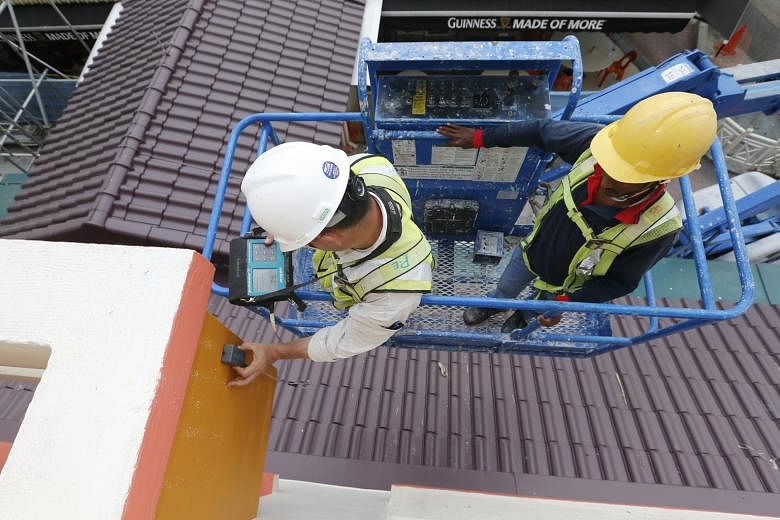The Housing Board continually improves its designs, building methods and materials to ensure blocks are safe, National Development Minister Lawrence Wong said.
HDB will keep on doing so in the light of recent incidents, Mr Wong assured the House yesterday, saying the blocks will be "safer than before".
He was responding to Workers' Party chief Low Thia Khiang (Aljunied GRC), who had asked about the HDB's guidelines on building designs and materials.
The safety of HDB blocks had come up for discussion after a spate of incidents recently in which block facade parts fell off. Following the incidents, the Building and Construction Authority (BCA) said it is exploring ways to improve building facade safety here.
Picking up on Mr Wong's point that the HDB is a "good developer" that does its own regular checks on its buildings, Mr Low had asked "whether HDB is also a good designer" that comes up with safe designs and uses durable materials.
Mr Wong replied that part of being a good developer is being a good designer too. He said: "So HDB of course will always try its best. I won't say that we are perfect. Some of these buildings were done many, many years ago.
"But (continually) year after year, HDB will always look at improving its design, its guidelines, the way it builds and make sure that it uses quality materials.
"It uses building methods that are reliable and safe. And if you look at the way this has been done progressively over the years, I can say for sure that the methods have improved and the materials are more reliable and our buildings are safer than before."
Over the past two months, facade parts on HDB blocks have dislodged on at least four occasions. These include a sunshade in Tampines and a cladding board in Circuit Road. No one was injured in the incidents, which are still under probe.
In the wake of these cases, Mr Christopher de Souza (Holland- Bukit Timah GRC), Ms Cheng Li Hui (Tampines GRC), Ms Tin Pei Ling (MacPherson) and Dr Tan Wu Meng (Jurong GRC) had asked about measures in place to ensure the safety of HDB block facades.
Mr Wong said his ministry will review its policies and benchmark them against those of other high- rise, high-density cities to identify areas for improvement. This may mean more emphasis on facade checks for building owners, he said, elaborating on the BCA's remarks.
Currently, building owners here, including the HDB, are required to appoint a professional engineer to do a Periodic Structural Inspection (PSI) every 10 years for residential buildings and every five years for other buildings. Such checks cover only structural parts like beams and columns, and exclude facade features such as false ceilings, sunshades and cladding boards, which fell off in the recent incidents.
Town councils are responsible for the facade maintenance of HDB blocks. The HDB selectively does annual audits on older blocks.
Mr Wong pointed out that for older HDB blocks, the PSI is carried out every five years - more frequently than the stipulated 10-year cycle.
When asked by Mr Pritam Singh (Aljunied GRC) what is defined as an "older" HDB block, Mr Wong said age is not the basis on which the HDB inspects older blocks.
"HDB will look at risks and will also look at materials in that particular building, how they were used," Mr Wong explained.
"So if you look at older blocks generally, say, those built in the 1980s, 1970s, certainly the materials used then, not just by HDB (but) by any developer then, are very different from the materials used today.
"So rather than have a specific year and say everything before that qualifies, everything after that doesn't qualify, we will look at building materials, we will look at the conditions and naturally we will give greater focus to the older blocks, as I think all town councils should within their own risk-based assessment and inspection."


